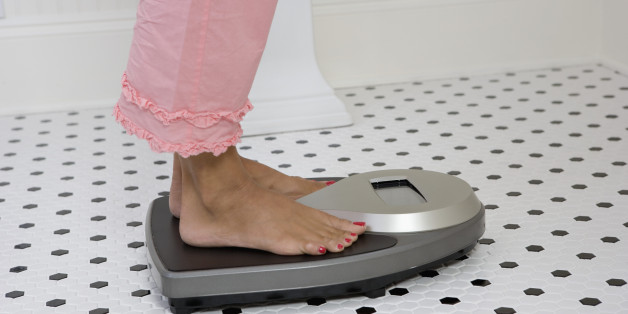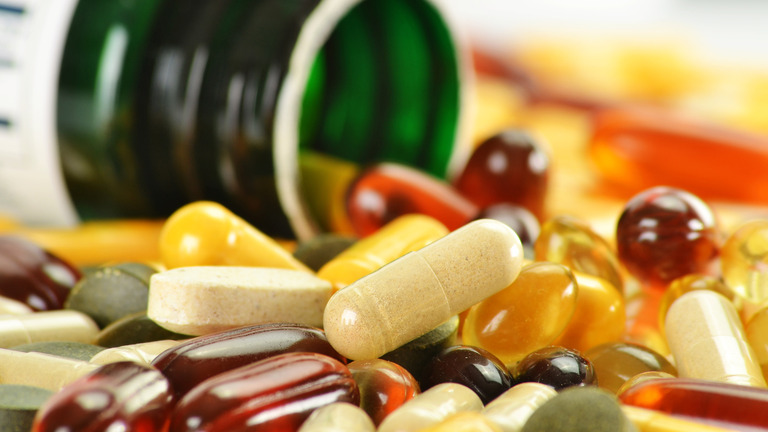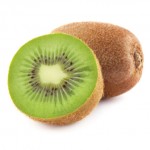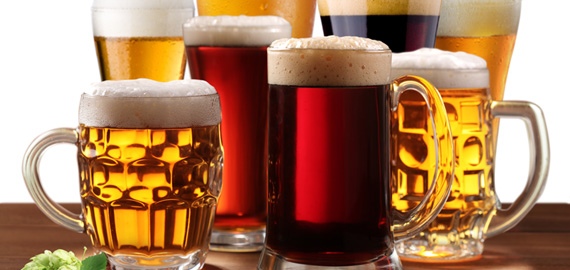Higher fat variation of DASH diet lowers blood pressure and triglyceride levels, does not raise LDL cholesterol
 A higher fat variation of the DASH diet lowers blood pressure and triglyceride levels and does not raise LDL cholesterol. The study titled “Comparison of the DASH (Dietary Approaches to Stop Hypertension) diet and a higher-fat DASH diet on blood pressure and lipids and lipoproteins: a randomized controlled trial” compared the effects of substituting full-fat for low-fat dairy in the DASH diet on blood pressure and triglyceride levels. The DASH diet was initially created as a means to lower blood pressure and originally included low-fat and non-fat dairy foods.
A higher fat variation of the DASH diet lowers blood pressure and triglyceride levels and does not raise LDL cholesterol. The study titled “Comparison of the DASH (Dietary Approaches to Stop Hypertension) diet and a higher-fat DASH diet on blood pressure and lipids and lipoproteins: a randomized controlled trial” compared the effects of substituting full-fat for low-fat dairy in the DASH diet on blood pressure and triglyceride levels. The DASH diet was initially created as a means to lower blood pressure and originally included low-fat and non-fat dairy foods.
The researchers tested whether or not blood pressure would improve along with triglyceride levels, if the DASH diet was modified with full-fat dairy foods. The HF-DASH diet (higher fat variation) included higher saturated fat and lower carbohydrates.
The researchers used a randomized crossover trial of healthy individuals who consumed a control diet, the standard DASH diet, and the modified HF-DASH diet over the course of three weeks. The control diet consisted of less fiber and vegetables and higher red meat, compared to the two DASH diets.
Thirty-six participants completed the three-week trial. Blood pressure reduced similarly in both the DASH and HF-DASH diet, compared to the control diet. The HF-DASH diet was found to reduce triglycerides, compared to the traditional DASH diet. The findings uncover that the HF-DASH diet is an effective alternative to the DASH diet with less stringent fat constraints, which can be applied to more individuals.
DASH diet overview
The DASH diet was created as a means to lower blood pressure and maintain healthy cholesterol levels. The diet focuses on eating a variety of foods in order to obtain nutrients in the right amounts. DASH is a lifelong approach to eating food all the while controlling blood pressure.
The DASH diet helps to reduce sodium and consume a variety of foods to intake proper nutrients your body needs.
Aside from lowering blood pressure, the DASH diet has been associated with other health benefits, too. The DASH diet also follows recommendations for preventing osteoporosis, cancer, heart disease, stroke, and diabetes.
Although the DASH diet is not intended to be a weight loss diet, you may find some pounds lost by simply adhering to healthier eating.
DASH diet and sodium levels
There is a strong focus on fruits and vegetables within the DASH diet, along with low-fat dairy foods. There are two forms of the DASH diet when it comes to reducing sodium: standard DASH diet and low-sodium DASH diet. In the standard DASH diet, you can consume up to 2,300 milligrams of sodium a day. In the lower sodium DASH diet, this number is brought down to 1,500 milligrams.
In both diets, sodium is reduced in order to achieve healthy blood pressure. To put into perspective how much lower sodium you consume in the DASH diet compared to your traditional diet, the average American consumes 3,500 milligrams or more of sodium a day.
Sodium levels in the DASH diet adhere to the Dietary Guidelines for Americans, which recommends sodium intake be around 2,300 milligrams a day or less.
DASH diet: Healthy eating plan
 If you’re interested in the DASH diet for lower blood pressure and improved health, let us explain what foods are involved. For starters, the DASH diet consists of 2,000 calories a day, which may actually seem low for some people but it is recommended as being healthy.
If you’re interested in the DASH diet for lower blood pressure and improved health, let us explain what foods are involved. For starters, the DASH diet consists of 2,000 calories a day, which may actually seem low for some people but it is recommended as being healthy.
Grains should be consumed six to eight servings a day. An example of one serving of grain is one piece of whole-wheat bread or one ounce of dry cereal.
Vegetable servings are four to five a day and you want to focus on vegetables with potassium and magnesium like sweet potatoes, carrots, and broccoli.
Fruits, too, should be consumed in four to five servings a day and should be incorporated as snacks or part of meals.
Two to three servings should be of low-fat dairy, including low-fat yogurt or one cup of skim milk. If you have a lactose intolerance, opt for lactose-free products.
Lean meats, poultry, and fish should be consumed six times or less a week. You will want to trim off excess fat and consume heart-healthy fish like salmon.
Nuts, seeds, and legumes can be enjoyed four to five times a week. One serving of nuts, seeds, and legumes is half a cup of cooked beans or one-third cup of nuts.
Fats and oils are enjoyed two to three servings daily. Avoid trans and saturated fats, as that’s what negatively affects your cholesterol. One serving of fat is one teaspoon of soft margarine or one tablespoon of mayonnaise.
Lastly, sweets should be limited to five servings a week. When opting for sweets, ensure they are low in fat, like jelly beans or sorbets. Also, cut back on added sugars and artificial sugars.
Alcohol and caffeine both have a negative effect on blood pressure, so keep these beverages down to a minimum as well.
DASH diet: Getting started
To some, the DASH diet may seem drastic, and so you may find success in lowering sodium and increasing servings of certain food groups gradually. The more your body begins to adjust to the changes, the further you can go in making the appropriate diet changes.
Here are some tips in order to get started with the DASH diet:
- Add a serving of vegetables to dinner
- Add a serving of fruit to a meal or as a snack
- Cut down your servings of butter and other fats by half
- Drink low-fat or skim dairy products
- Limit meat to six ounces a day
- Add more vegetables and dry beans to your diet
- Swap your unhealthy snacks for healthy ones, like nuts, low-fat yogurt, or fruit
- Read food labels to ensure they are low in sodium
Adhering to these tips can help you get started on the DASH diet and put you on the journey to a healthier you.
Portfolio diet reduces blood pressure and lowers cholesterol
Researchers at St. Michael’s Hospital in Toronto have found that the “portfolio diet” is best to lower cholesterol and reduce high blood pressure. The findings come from a secondary analysis, which was collected from 2011 on the portfolio diet aimed to reduce cholesterol. Continue reading…
-
Good Nutrition The Foundation For Weight Loss Success
Every year, millions of people endure the pain of going on a diet i
-
Ideas That Really Help You Loose Your Weight
Admitting that you are overweight or eve
-
Fat Burning Furnace Best Review: Fat Burning Furnace System Review
Fat Burning Furnace Review - Review on F
-
Losing Weight - 3 Steps To Mix Socializing With Dieting
We are a social and habitual species, so its natural that we build up
-
How Is Fast Weight Loss Harmful And What To Do About It?
There are people who dream to achieve a fast weight loss by shedding
-
Eight Tips for Talking to Your Kids About Their Weight
Talking to our children about drugs and sex (but never rock and roll b
- DON'T MISS
- Weight Loss Tips: Small Changes Make a Huge Difference
- Las Vegas Weight Loss - Real Weigth Loss Solutions For Real People
- 6 Ways to Cut Calories Every Day
- 5 Ways to lose one pound of fat
- The Health Advantages Of Exercise And Apple Cider Vinegar For A Better Life
- Weight Loss Methods - Things You Did Not Know About Weight Loss
- Is Your Favorite Coffee Drink Making You Gain Weight?
- How To Manage Your Weight The Right Way?
- A One Day Diet Let You Diet Every Other Day
- Weight Loss : The Side Effects Of Ephedra Supplements




